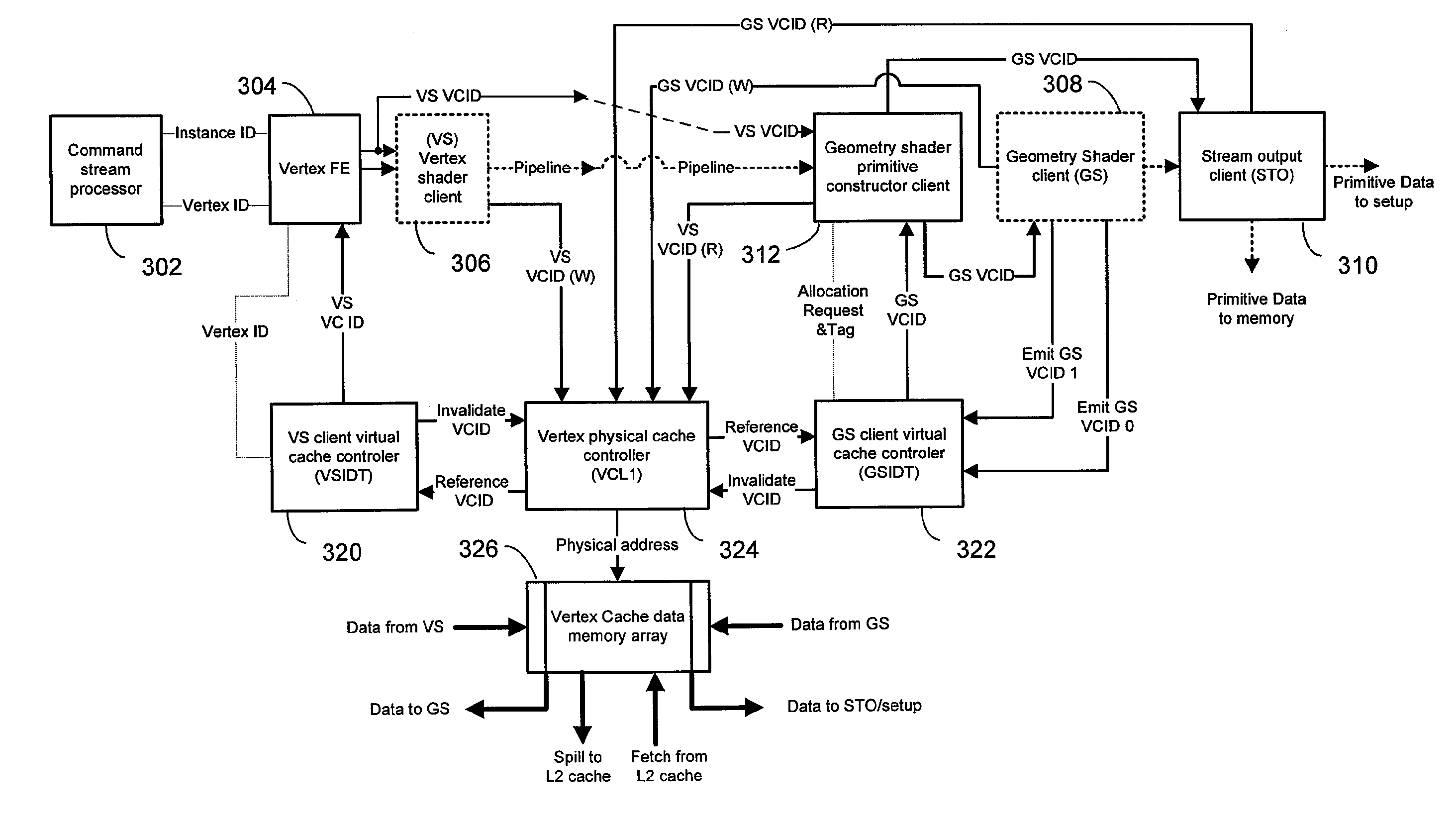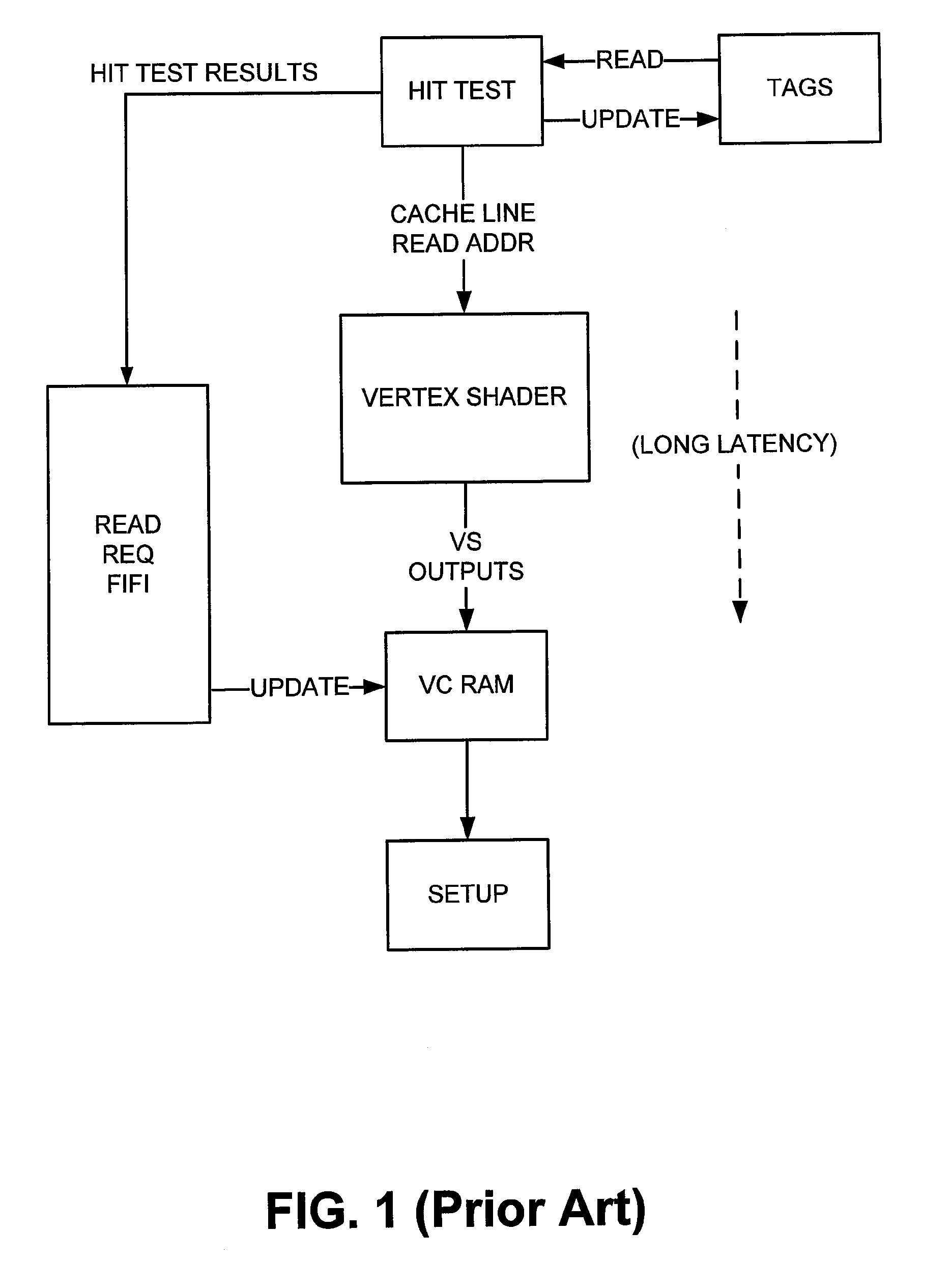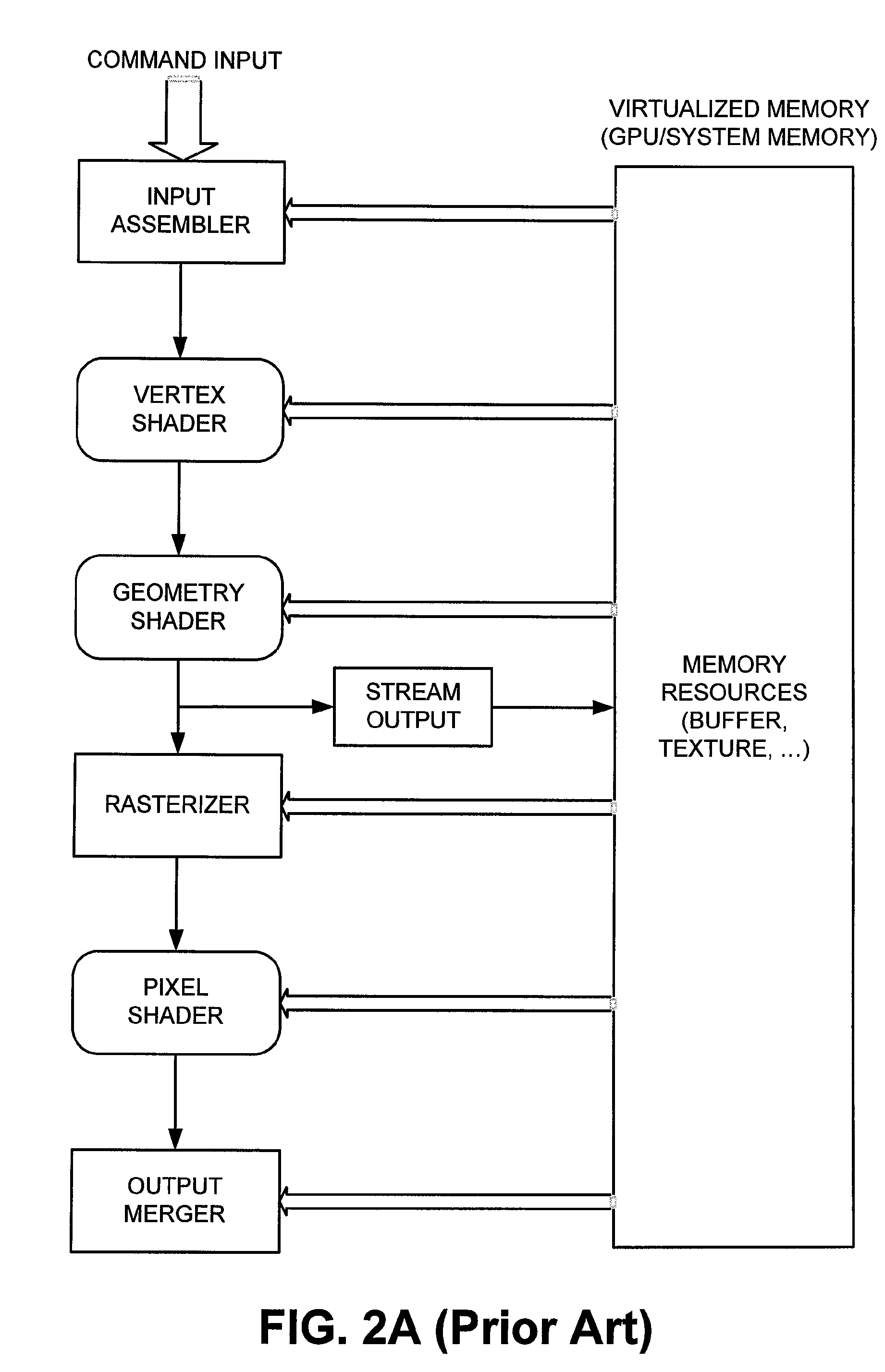Caching Method and Apparatus for a Vertex Shader and Geometry Shader
a shader and geometry technology, applied in computing, memory adressing/allocation/relocation, instruments, etc., can solve the problems of significant latency between cache hit test and data read, cache frequently stalls, and cache hit test and subsequent line replacement are stalled
- Summary
- Abstract
- Description
- Claims
- Application Information
AI Technical Summary
Benefits of technology
Problems solved by technology
Method used
Image
Examples
Embodiment Construction
[0027]Various embodiments of the present invention address the perceived shortcomings of the prior art approaches described above and provide a cache design that minimizes the stalling that may occur due to the processing of hits and long latencies experienced by the VS unit. Embodiments described herein provide for flexible buffer sizes within the cache in order to meet the needs of the GS and the VS units while allowing both the GS and VS units to share the same cache.
[0028]Exemplary embodiments of the present invention described herein employ a pair of virtual caches that are separate from the physical cache controller. A set of virtual tags is decoupled from the physical tags of the physical cache. The actual number of physical cache entries may be smaller or larger than the number of virtual tag entries (e.g., for one embodiment, it may be larger for higher hit rates in order to improve average latency). The result of a hit test on the virtual tag is an address in the physical ...
PUM
 Login to View More
Login to View More Abstract
Description
Claims
Application Information
 Login to View More
Login to View More - R&D
- Intellectual Property
- Life Sciences
- Materials
- Tech Scout
- Unparalleled Data Quality
- Higher Quality Content
- 60% Fewer Hallucinations
Browse by: Latest US Patents, China's latest patents, Technical Efficacy Thesaurus, Application Domain, Technology Topic, Popular Technical Reports.
© 2025 PatSnap. All rights reserved.Legal|Privacy policy|Modern Slavery Act Transparency Statement|Sitemap|About US| Contact US: help@patsnap.com



